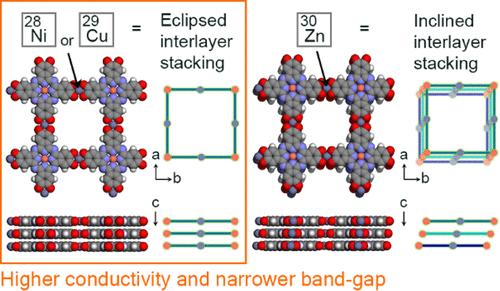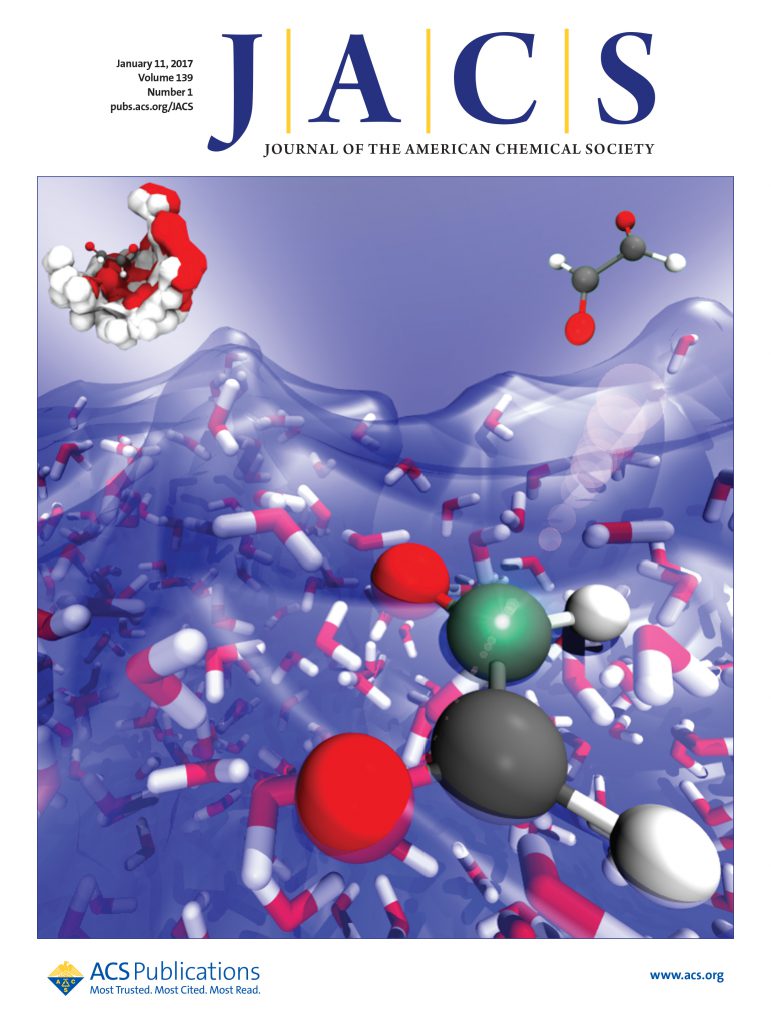Tuning the Structure–Property Relationships of Metallophthalocyanine-Based Two-Dimensional Conductive Metal–Organic Frameworks with Different Metal Linkages
IF 14.4
1区 化学
Q1 CHEMISTRY, MULTIDISCIPLINARY
引用次数: 0
Abstract
Metallophthalocyanine (MPc)-linked conductive two-dimensional (2D) metal–organic frameworks (MOFs) hold tremendous promise as modular 2D materials in sensing, catalysis, and energy-related applications due to their combinatory bimetallic system from the MPc core and bridging metal nodes, endowing them with high electrical conductivity and multifunctionality. Despite significant advances, there is a gap in fundamental understanding regarding the periodic effects of metal nodes on the structural properties of MPc-linked 2D MOFs. Herein, we report a series of highly crystalline MOFs wherein copper phthalocyanine (CuPc) is linked with Ni, Cu, and Zn nodes (CuPc-O-M, M: Ni, Cu, Zn). The prepared CuPc-O-M MOFs exhibit p-type semiconducting properties with an exceptionally high range of electrical conductivity. Notably, the differences in the 3d orbital configurations of the Ni, Cu, and Zn nodes in CuPc-O-M MOFs lead to perturbations of the interlayer stacking patterns of the 2D framework materials, which ultimately affect material properties, such as semiconducting band gaps and charge transport within the framework. The Cu2+ (3d9) metal node within the eclipsed interlayer stacking of CuPc-O-Cu MOF demonstrates excellent charge transport, which results in the smallest band gap of 1.14 eV and the highest electrical conductivity of 9.3 S m–1, while the Zn2+ (3d10) metal node within CuPc-O-Zn results in a slightly inclined interlayer stacking, leading to the largest band gap of 1.27 eV and the lowest electrical conductivity of 2.9 S m–1. These findings form an important foundation in the strategic molecular design of this class of materials for multifaceted functionality that builds upon the electronic properties of these materials.

求助全文
约1分钟内获得全文
求助全文
来源期刊
CiteScore
24.40
自引率
6.00%
发文量
2398
审稿时长
1.6 months
期刊介绍:
The flagship journal of the American Chemical Society, known as the Journal of the American Chemical Society (JACS), has been a prestigious publication since its establishment in 1879. It holds a preeminent position in the field of chemistry and related interdisciplinary sciences. JACS is committed to disseminating cutting-edge research papers, covering a wide range of topics, and encompasses approximately 19,000 pages of Articles, Communications, and Perspectives annually. With a weekly publication frequency, JACS plays a vital role in advancing the field of chemistry by providing essential research.

 求助内容:
求助内容: 应助结果提醒方式:
应助结果提醒方式:


